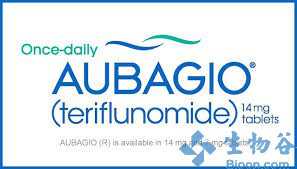Cubist抗生素CXA-201 III期cUTI试验达非劣性终点
2013-11-26 tomato 生物谷
抗生素领域巨头Cubist制药11月25日公布了实验性抗生素CXA-201(ceftolozane/tazobactam[他唑巴坦])治疗复杂性尿路感染(cUTI)的关键性III期临床试验的顶级积极数据。该项研究中,CXA-201达到了相较于左氧氟沙星(levofloxacin)的统计学非劣性主要终点(10%非劣效性界值,10% non-inferiority margin)。 该项研究的主
抗生素领域巨头Cubist制药11月25日公布了实验性抗生素CXA-201(ceftolozane/tazobactam[他唑巴坦])治疗复杂性尿路感染(cUTI)的关键性III期临床试验的顶级积极数据。该项研究中,CXA-201达到了相较于左氧氟沙星(levofloxacin)的统计学非劣性主要终点(10%非劣效性界值,10% non-inferiority margin)。
该项研究的主要终点为治疗结束后5-9天内的微生物消灭和临床治愈率(综合治愈率)复合终点。数据表明,治疗差异的95%置信区间下限为2.3%,上限为14.6%,有利于CXA-201。二次分析结果与主要结果一致,并支持主要结果。
尽管该项研究并没有前瞻性地设计为证明优越性,但研究发现,有利于CXA-201的积极治疗差异95%置信区间下限大于0,表明在该项试验中,CXA-201具有相较于levofloxacin的统计学优越性。
CXA-201是一种实验性抗生素,目前正开发用于治疗某些革兰氏阴性菌感染。该药由ceftolozane和tazobactam组成,其中ceftolozane是一种新型头孢菌素,与当前可用头孢菌素相比,ceftolozane已被证明对铜绿假单胞菌(Pseudomonas aeruginosa)有更强效的体外活性。
tazobactam(他唑巴坦)则是一种强效的β-内酰胺酶抑制剂。添加tazobactam后,能够扩大CXA-201的覆盖范围,纳入最广谱的产β-内酰胺酶大肠杆菌(E.coli)、肺炎克雷伯菌(klebsiella pneumoniae)及其他肠杆菌。
目前,CXA-201正开发用于复杂性尿路感染(cUTI)、复杂性腹腔内感染(cIAI)、医院获得性细菌性肺炎(HABP)、呼吸机相关性细菌性肺炎(VABP)的治疗。
此前,FDA已授予CXA-201快速通道地位(fast track status)。
英文原文:Cubist Announces Positive Top-Line Results from Phase 3 Trial of Investigational Antibiotic Ceftolozane/Tazobactam In Complicated Urinary Tract Infections
Lexington, Mass., November 25, 2013 – Cubist Pharmaceuticals, Inc. (NASDAQ: CBST) today announced positive top-line results from the Company’s pivotal Phase 3 clinical trial of its antibiotic candidate ceftolozane/tazobactam in complicated urinary tract infections (cUTI). Ceftolozane/tazobactam met its primary endpoint of statistical non-inferiority compared to levofloxacin (10% non-inferiority margin). The primary endpoint is a composite of microbiological eradication and clinical cure rate (composite cure rate) at 5 - 9 days after end of therapy (the Test of Cure visit). The 95% confidence interval around the treatment difference had lower and upper bounds of 2.3% and 14.6%, respectively, favoring ceftolozane/tazobactam. Results of the secondary analyses were consistent with and supportive of the primary outcome.
Although this trial was not prospectively designed to demonstrate superiority, the finding that the lower bound of the 95% confidence interval around the positive treatment differences in favor of ceftolozane/tazobactam was greater than zero indicated statistical superiority over levofloxacin in this trial.
The spectrum of Gram-negative pathogens seen in this trial was typical of that seen in other clinical trials in patients with complicated urinary tract infections.
The treatment emergent adverse event rate for ceftolozane/tazobactam was 34.7% and for levofloxacin was 34.4%. In this trial, the most commonly reported adverse events for ceftolozane/tazobactam were headache (5.8%), constipation (3.9%), hypertension (3%), nausea (2.8%), and diarrhea (1.9%). This adverse event profile is consistent with that seen with ceftolozane/tazobactam in the prior Phase 2 trial in cUTI and comparable to levofloxacin in this trial.
“We are very pleased with these positive results, which represent a significant milestone for both ceftolozane/tazobactam and Cubist,” said Steven Gilman, Ph.D., Executive Vice President of Research and Development and Chief Scientific Officer of Cubist Pharmaceuticals. “As the global leader in antibiotic research and development, Cubist is committed to combating the growing threat of resistant bacteria and providing needed therapies for patients with serious infections. We look forward to the upcoming data on ceftolozane/tazobactam from our Phase 3 trial in complicated intra-abdominal infections.”
Cubist is concluding a pivotal Phase 3 trial of ceftolozane/tazobactam in patients with complicated intra-abdominal infections (cIAI). This study in patients with cIAI is comparing the safety and efficacy of ceftolozane/tazobactam in combination with metronidazole relative to the comparator meropenem. The Company expects to announce cIAI top-line data in late December and, as previously agreed to with regulatory authorities, the cUTI and cIAI data together will form the potential submission package to regulatory authorities requesting approval in both indications.
Additionally, ceftolozane/tazobactam is being developed for the potential treatment of Hospital-Acquired Bacterial Pneumonia (HABP)/Ventilator-Associated Bacterial Pneumonia (VABP). The Company expects to initiate a pivotal Phase 3 trial to assess the safety and efficacy of ceftolozane/tazobactam (at a dose of 3 g every 8 hours) in this indication during the first half of 2014.
About the Ceftolozane/tazobactam Phase 3 cUTI Trial
Results from the pivotal Phase 3 cUTI clinical trial include data from two multi-center, global, double-blind, randomized studies. The trial compared the safety and efficacy of ceftolozane/tazobactam, administered intravenously (1.5 g q8h), to levofloxacin, administered intravenously (750 mg qd), in adult patients (total n=1050) with cUTI, including those where the infection spread to the kidney (pyelonephritis). The primary endpoint of the trial, as defined in collaboration with the U.S. Food and Drug Administration, was to establish non-inferiority of ceftolozane/tazobactam to the comparator levofloxacin with respect to the proportion of patients in the modified microbiological intent to treat (mMITT) population who achieve both microbiological eradication and clinical cure at the Test of Cure (TOC) visit 5 - 9 days after the last dose of the study drug is administered. The primary endpoint in the European Union of non-inferiority based on microbiological eradication was also met.
About Ceftolozane/tazobactam
Ceftolozane/tazobactam, an antibiotic candidate being developed to treat certain Gram-negative infections, consists of ceftolozane, a novel cephalosporin that has demonstrated more potent in vitro activity against Pseudomonas aeruginosa as compared to the currently available cephalosporins, with tazobactam, a well-established ?-lactamase inhibitor. The addition of tazobactam broadens coverage to include most Extended-spectrum ?-lactamase (ESBL)-producing Escherichia coli (E. coli), Klebsiella pneumoniae, and other Enterobacteriaceae. Ceftolozane/tazobactam is being developed for the potential treatment of Complicated Urinary Tract Infections (cUTI), Complicated Intra-Abdominal Infections (cIAI), and Hospital-Acquired Bacterial Pneumonia (HABP)/Ventilator-Associated Bacterial Pneumonia (VABP).
Ceftolozane/tazobactam has been granted Fast Track status, pursuant to the GAIN Act, by the U.S. Food and Drug Administration (FDA) for its respective Qualified Infectious Disease Product (QIDP) indications. The QIDP designation for ceftolozane/tazobactam allows for certain incentives related to the development of new antibiotics, including eligibility for Fast Track status and Priority Review.
本网站所有内容来源注明为“梅斯医学”或“MedSci原创”的文字、图片和音视频资料,版权均属于梅斯医学所有。非经授权,任何媒体、网站或个人不得转载,授权转载时须注明来源为“梅斯医学”。其它来源的文章系转载文章,或“梅斯号”自媒体发布的文章,仅系出于传递更多信息之目的,本站仅负责审核内容合规,其内容不代表本站立场,本站不负责内容的准确性和版权。如果存在侵权、或不希望被转载的媒体或个人可与我们联系,我们将立即进行删除处理。
在此留言














#BIS#
53
#III#
46
#III期#
54